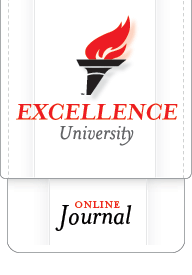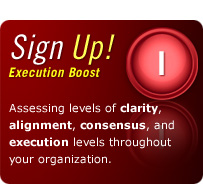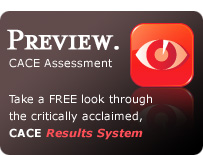On Becoming a More “Fully Functioning” Organization
April 9th, 2007
Some thoughts on how to access more of your entire organization’s potential
I recently met with an organizational leader and human potential expert, Dr. Margaret “Pat” Korb. At 85 years of age, Dr. Korb is still going strong – consulting, running trainings, and leading her organization, The Gestalt Center of Gainesville. During our meeting, she showed me a pamphlet written in the 1960’s by another expert in human potential, Dr. Carl Rogers.
The pamphlet was a summary of his decades of research into what increases the potential of human beings. As I browsed through the pamphlet, I realized to my surprise (and delight) that many of the ideas he was writing about over 40 years ago are only recently being brought into the business world via such influences as Jim Collins (Good to Great and Built to Last) Stephen Covey (in his newest work, The 8th Habit), and Jack Welch (in such works as Winning).
Dr. Carl Rogers’ major ideas, and some thoughts on how these ideas have positively impacted organizations over the last few decades, are listed below. These ideas may help you to create a more “fully functioning” organization – and help you to be a more satisfied individual as you build such an organization:
- Decreasing “BS”: moving away from facades click here to read more
- Encouraging others to meet their own expectations – rather than yours click here to read more
- Spending less time worrying about pleasing others click here to read more
- Increasing your organization’s “openness to experience and change” click here to read more
- Understanding and embracing complexity click here to read more
- Truly appreciating (instead of simply tolerating or accepting) others click here to read more
- Encouraging (and training) others to trust themselves click here to read more
Some final thoughts on Fully Functioning Organizations: The more Fully Functioning organization accesses more of the minds, bodies, hearts, and “guts” of its people. Working at such an organization facilitates the development of a dynamic, fresh, and effective workforce that is not only built for positive change – it is filled with people constantly excited by it.
Movement and change supported by some constant processes are the essence of life – both for organizations and for individuals. Creating an organizational process that is more Fully Functioning will not only earn your money, but will also positively impact you, your employees, your clients, and your little part of the world. What could be more satisfying?
Article Filed under: I. WATER (Team/Group Excellence)



17 Comments Add your own
1. Business Trainer | July 9th, 2007 at 2:59 pm
Very well done. I’m delighted to have found your site.
I’m familiar with Dr. Carl Rogers work. I’ve also studied in depth Steven Covey’s books, and have met, trained with, and TRAINED leaders of various ceritfications (Covey Certified, Aubrey Daniels, etc.). It really looks like you’ve done a great job of bringing together materials from all those areas, and distilling them into one program!
I’ve added your articles list to my RSS feed, and look forward to following more of your insights.
If people understood just what you’ve posted above I can only begin to imagine the impact it would have on businesses.
2. Brian Mistler | July 9th, 2007 at 5:24 pm
Agreed (with the article and the comments).
I’ve worked with Dr. Higley now for several years, and knowing him and the Building Blocks / Excellence Tree Materials, and having studied Covey myself for years, am convinced that these programs represent a better understanding of Carl Rogers and Steven Covey’s material that any other business trainer I’ve known.
The article above points to and demonstrates that pretty well, doesn’t it ;-).
“Creating an organizational process that is more Fully Functioning will not only earn your money, but will also positively impact you, your employees, your clients, and your little part of the world. What could be more satisfying?” — pure Covey’s 8th Habit 😉
And, all the rest are, to me, a pretty nicely put version of Covey’s material and a core humanistic business philosophy.
3. John Spence | July 10th, 2007 at 2:12 pm
I’ve just come back from a week at the Aspen Institute for their annual “Ideas Festival” where more then 200 of the top business and world leaders of today converged to discuss the future of American competitiveness and one things was abundantly clear… smart, bright, talented people will be the very foundation of competitiveness in the future — and these sort of people will ONLY work in organizations they feel good about, are proud of and have fun in — in other words — fully functioning organizations. I might also add, that a leader’s organization will never become “fully functioning” until they work on themselves first.
The seven key points that Dr. Higley lays out in this article are right on target — for building a more satisfying and fully functional life and business. Very good ideas here – well played. John
4. Brian Higley | July 11th, 2007 at 10:39 am
I agree with John Spence’s assertion above regarding the correlation between leaders and their organizations (“. . . a leader’s organization will never become “fully functioning” until they work on themselves first.”). This is why I’ve also written an article on this blog covering “Self-Mastery” at: http://www.excellenceuniversity.net/journal/53/self-mastery-what-is-it-whos-got-it-and-how-do-we-increase-it. It might be a nice companion article to this one.
5. Kevin Tate | November 13th, 2007 at 10:34 pm
I am a student in a Counseling program, and am new to the world of business consulting. What is quite refreshing about reading this article is to see the way in which these concepts are stated without the “B.S.”. I send a lot of time reading very long books with very long words, and it is nice to see it spelled out so clearly and to the point.
While all of these points make sense to me as a person who just beginning to learn about organizational success, the one that really hits home for me is the idea of leaders promoting self-trust in their organization’s members. This is something that has had a powerful effect on me as a employee or mentee in the past. It is more difficult in some ways to have that trust handed over, but it is quite empowering and gave me the ability to grow both as an individual and as a member of the organization. Looking back I can see that this trust that was given to me was a risk, but through a committed relationship with my mentor or boss, I was able to contribute exponentially more to the organization.
I am excited by seeing these human concepts applied to the purpose of allowing organizations to promote both material and spiritual success for those involved.
6. Brian Higley | November 15th, 2007 at 6:01 pm
Kevin,
I really appreciate your taking the time to read this article and comment so thoroughly on it. Indeed, trust is a risk – but I think that the old saying “no risk, no reward” may apply very well here!
Thanks again for your thoughts – look forward to reading more from you!
7. Thomas Foxx | November 20th, 2007 at 3:31 pm
The seven concepts discussed in this article identify areas I believe organizations and individuals are familiar with, but are extremely undervalued and unacknowledged. Facades have seemed to have ingrained themselves in daily activities; constantly, we enter environments where individuals are projecting themselves or ideas in manner assumed to be most acceptable or beneficial. The discussion to “move away from facades” could possibly open an individual or organization to new capabilities or eliminate unnecessary ones. I constantly encounter college students who change their major, and professionals who are unhappy with their chosen areas. These behaviors may be the result of an exhausted façade and excessive time spent “pleasing others”. I’ve noticed often these people are unenthusiastic about their involvement in work or scholastic tasks. Despite a lack of vocational enthusiasm, we must realize these same individuals work in an organization that strives for organizational excellence. Jim Collins’ reasserts this concept in Good to Great, his research found identifying employee interest and a corresponding employment areas in the organization to be a reoccurring factor of excellent organization. Dr. Carl Rogers’s ideas can help improve the effectiveness in an any organization, but this also implies that facades and wasted energy can carry organizations far from an authentic identity.
Excellent compilation of Dr. Rogers’s ideals, I completely agree with the concepts presented in this article. These concepts are too strong to ignore we unknowingly encounter some aspect of each them daily. The implications of this article could be endlessly discussed, but it is unnecessary. The article’s simplistic presentation of ideals is enough to create immense organizational change.
8. Jonathan Branch | November 21st, 2007 at 12:10 am
These seven concepts for improving a team are important and I agree with them all. Many organizations may come across this wisdom but not implement it for one reason or another. I think that creating a self-monitoring and pier-monitoring system is a great idea. Dr. Higley introduced me to this idea. Creating a score card of these seven items I feel could be a possible solution. Write down the seven criteria with definitions for each on the side and with a scoring system associated with each one on a chart. Have the employee fill out the chart then have the adviser or piers asses his assessment. Then rewarding employees for doing well and boosting your team’s performance is important. Giving them a reward for going above what was expected is a great way to improve moral. This method seemed to work for me in my group and I hope this comment helps.
9. Brian Higley | November 23rd, 2007 at 10:14 pm
Thomas,
Great comments – I agree with your observation of the overlap between Good to Great and Carl Rogers’ in relation to the value of authenticity. I’ve found that these concepts not only change organizations for the better – they also help improve the lives of the individuals in the organization outside the work arena.
10. Brian Higley | November 23rd, 2007 at 10:18 pm
Jonathan,
I think a “Fully Functioning Scorecard” is a very good idea – I predict it would not only effect team performance, but also its satisfaction levels. Very good thought!
11. Excellence Tree Journal &&hellip | February 20th, 2009 at 11:41 am
[…] Click here to read more about Fully Functioning Organizations […]
12. Excellence Tree Journal &&hellip | February 20th, 2009 at 11:41 am
[…] Click here to read more about Fully Functioning Organizations […]
13. Excellence Tree Journal &&hellip | February 20th, 2009 at 11:42 am
[…] and it may be that certain employees can better assess the expectations of the customer! Click here to read more about Fully Functioning Organizations […]
14. Excellence Tree Journal &&hellip | February 20th, 2009 at 11:43 am
[…] Click here to read more about Fully Functioning Organizations […]
15. Excellence Tree Journal &&hellip | February 20th, 2009 at 11:43 am
[…] Click here to read more about Fully Functioning Organizations […]
16. Excellence Tree Journal &&hellip | February 20th, 2009 at 11:44 am
[…] Click here to read more about Fully Functioning Organizations […]
17. Excellence Tree Journal &&hellip | February 20th, 2009 at 11:45 am
[…] Click here to read more about Fully Functioning Organizations […]
Trackback this post | Subscribe to comments RSS Feed
Leave a Comment
Some HTML allowed:
<a href="" title=""> <abbr title=""> <acronym title=""> <b> <blockquote cite=""> <cite> <code> <del datetime=""> <em> <i> <q cite=""> <s> <strike> <strong>